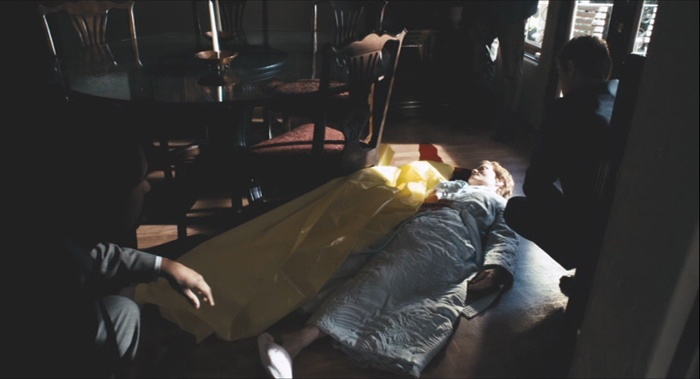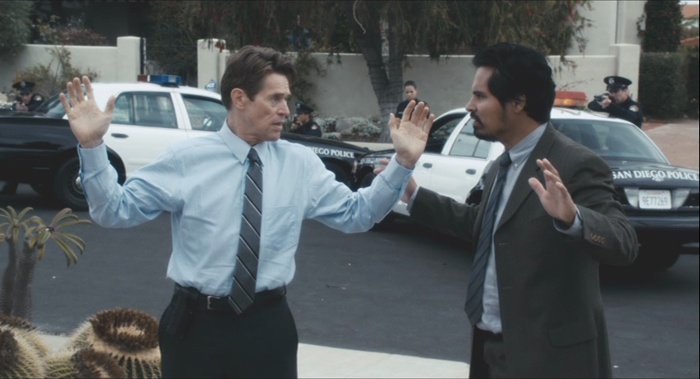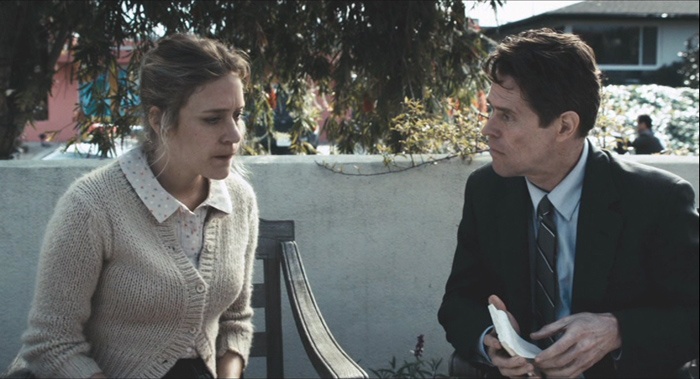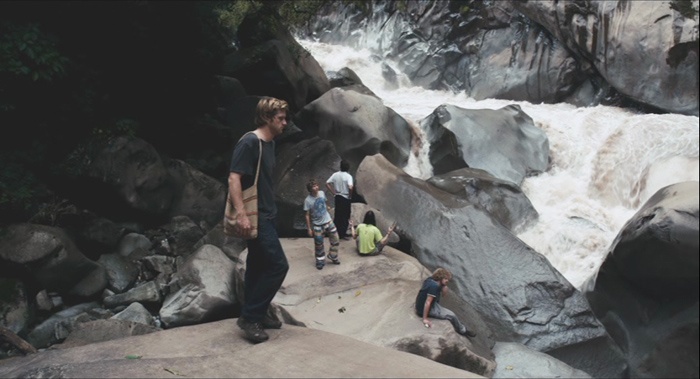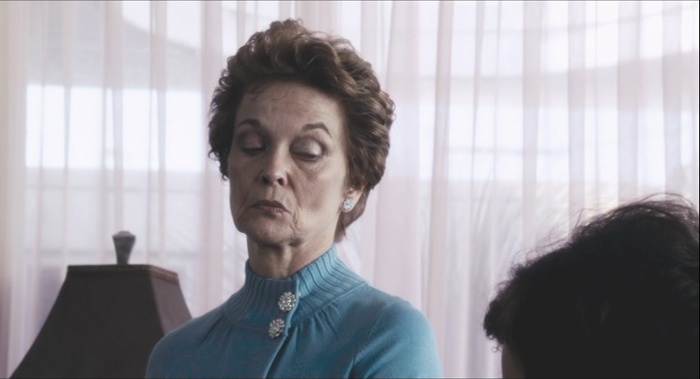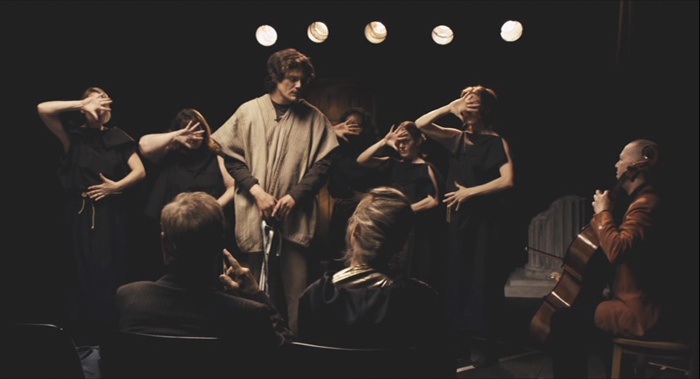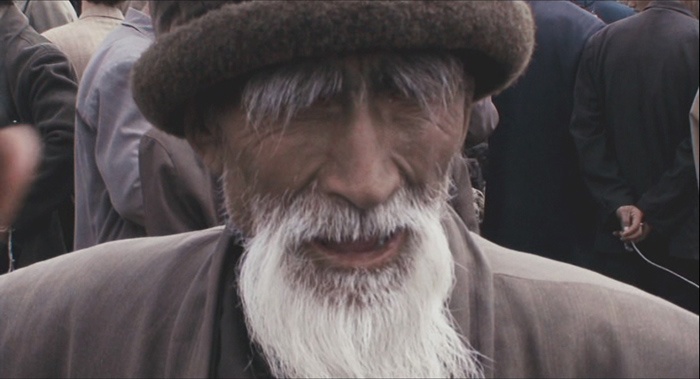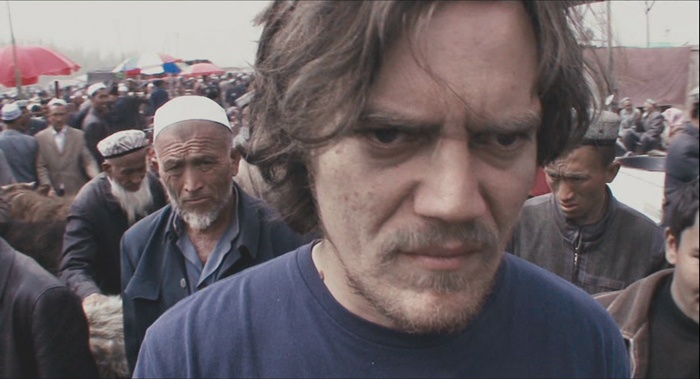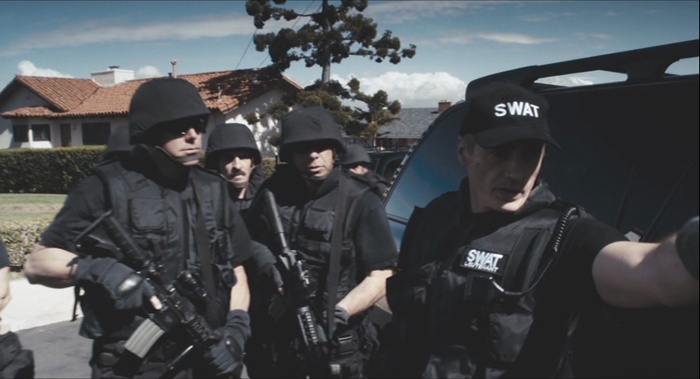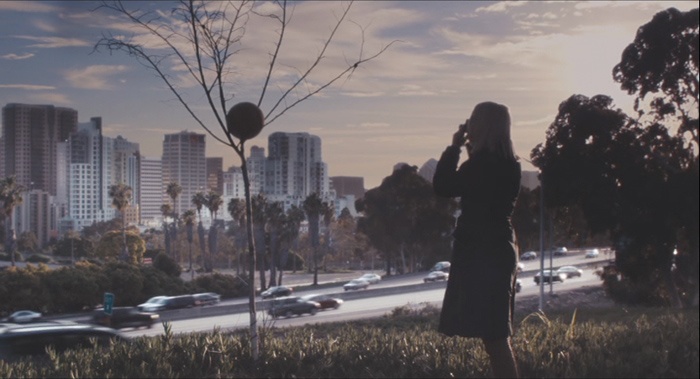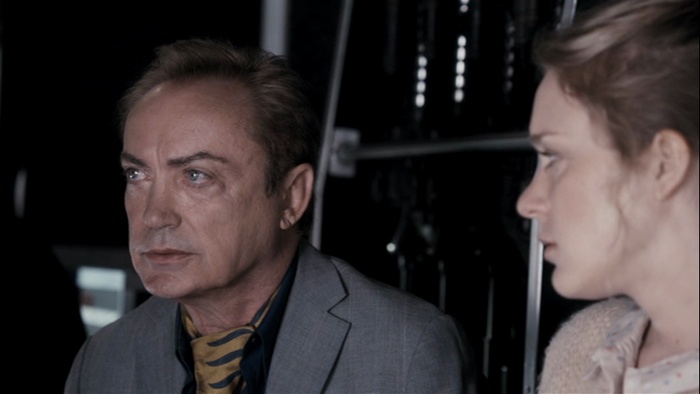Based on a true story about a
promising young actor (Mark Yavorsky, in 1979 a student at
UC-San Diego) whose character in the play he was in kills
his mother. One day he walked out of the play and went home
and continued the performance.
The Movie: 6
Ordinarily we don’t think of the films of Werner Herzog as
comedy. Quite the contrary. In movies from Aguirre the
Wrath of God and
Fitzcarraldo, to Grizzly Man, Herzog explores
the dark side of human nature, that part of us that drives
us to impossible goals and, in some cases, enables us to
overcome impossible odds. It’s not that a typical Herzog
film is entirely bereft of humor (witness his version of
Bad Lieutenant) but comedy has not, up until now,
been so much in the foreground. For how else are we to
understand and respond to My Son, My Son, What Have Ye
Done, a title with a curious rhyming lilt that could
portend a punch line as much as tragedy?
On the face of it, the subject, matricide, is hardly a
joking matter. If we were to attend only to the dialogue,
the movie would appear to explore seriously how such a deed
might have come about, but in Herzog’s hands, the result is
quite different - emotionally detached, as are we, from the
deed, its perpetrator and the effect on those closest to
them. This may be no coincidence. As Herzog himself observes
in the bonus feature “Behind the Madness” when he met
Yavorsky to research his subject he found him quite scary
and decided there and then that his movie would not closely
follow the life and times of the real-life protagonist.
Perhaps Herzog went further in that direction than he meant
or perhaps the film represents a new path for him.
As I watched this strange movie - more, I thought, David
Lynch than Herzog - I wondered if I were an architect in
1949 when the movie of The Fountainhead came out, if I would
be so distracted by questions about the designs used to
represent this or that intention of the protagonist that I
would be unable to assess or enjoy the film as drama, or
metaphor, or whatever. For psychology being my profession,
such was the case here.
Michael Shannon plays Brad McCullum, a man, not so young
that his girlfriend can’t help but remark that he still
lives with his mother (Grace Zabriskie) after thirty-odd
years and caters to her every whim. While this might contain
the seed to explain his murderous act, Herzog wants to tie
in two other events: a kayaking adventure in Peru that left
five of his friends dead, and the classic Greek play he had
been rehearsing, “Orestes” where the title character, played
by Brad, kills his mother in order to put an end to a larger
cycle of generational killing.
Herzog and co-writer Herbert Golder are careful not to show
us the “pre-morbid” Brad. The story proper is told in
flashback interviews, post-Peru, with the fiance, the
director of the play and an eyewitness to the murder who
says that Brad was “changed” by the incident in South
America. Changed from what, we may wonder? When we watch
Brad and his mother together in these flashbacks we cannot
but assume that their love/hate balance of dependency and
antagonisms have always been that way, and that something
about Peru and Orestes merely tipped a fated scale. Perhaps.
When he returns from Peru, Brad speaks of having had contact
with an “inner voice” that he took as the voice of God
cautioning against joining his friends on an adventure that
to anyone with the IQ of an avocado would have been seen as
suicidal. He has a girlfriend (Chloë Sevigny) of two years
who was planning on marrying him in another few weeks, but
we never see the slightest whiff of affection exchanged
between them. Instead he shares with her his insight as to
the identity of God: the face on a box of Puritan Oatmeal.
(Who knew!) The director of his play (Udo Kier) says he put
up with Brad’s strange behavior because he was talented, but
we see no evidence of that talent. Brad’s mother, on the
other hand, complains to her son that she bought a grand
piano for him but he never plays it.
Not to put too fine a point on
it, Brad is clearly certifiable (as was Yavorsky). While the
temptation is seductive, even overpowering, those who try to
explain schizophrenia in historical, rational terms do so at
their peril. Those close to Brad admit only he was “changed”
when he returned from Peru. Having the results of his
handiwrork, the detectives who arrive on the scene (Willem
Dafoe and Michael Peña) take Brad seriously (Brad has holed
himself up into his house across the street along with two
“hostages”). But then, they hadn’t interviewed him and are
only playing the situation by the book. A correct diagnosis
would not likely have changed their strategy. (More on this
shortly.)
I’m not saying that anyone should have smelled danger about
the “changed” Brad, but the fact that his friends were
willing to make allowances in one form or another speaks
volumes about the kind of social animals we are. I feel that
this is the most reliable dramatic thesis in the screenplay,
yet it is not underscored by Herzog. What’s more, I remain
pretty much unimpressed by any suggestion of cause and
effect relationship between the play Brad was rehearsing and
the matricide, and I doubt that Herzog would say otherwise.
The play and the sword are convenient devices both to mature
and crystalize Brad’s pre-existing insanity and for Herzog’s
narrative. Bad luck for mom. Werner has a field day with it.
So, what’s all this about a comedy! As Roger Ebert tells us
repeatedly, a movie isn’t just about its subject but it’s
about how it’s about its subject. At the risk of seeming all
film-schooly, starting with the opening scene where
Detectives Havenhurst and Vargas joke in the car before they
head off to the murder scene, there is hardly a moment,
aside from the fleeting shot of the corpse floating in her
blood, that isn’t dripping with off-kilter humor. Over here
we have the detectives making the oddest measurements of the
precise placement of coffee cups on a table in the room
adjacent to the murdered victim as if they could have the
remotest importance; later we see them standing in the
street both with their hands up discussing strategy; and
later still, Vargas delivering pizza to a talking garage
door. There’s Brad yelling to the detectives through a
curtain behind a sliding glass door - as the voice speaks,
wizardlike, the curtain moves like he’s breathing directly
into it. Then we have the rehearsals of Orestes where Brad
stands there dazed, brandishing a lethal sword, and all the
director can say is that it’s not a proper Greek sword.
There’s Brad Dourif as Uncle Ted, whose very presence is
pure comedy, assisted by a corral full of world’s largest
bird in one scene and the world’s smallest man in another.
There’s the Peruvian expedition where every man is whacked
out of his mind on some hallucinogenic or other, and where
only Brad has the good sense not to risk having his brains
bashed in by a raging river I wouldn’t dip my toe into – and
even he has to invent an “inner voice” to get himself off
the hook. But nothing compares to mother herself: the
amazing Grace Zabriskie, with cheeks a chipmunk would envy
and a glance of pure reproach. Perhaps you remember her as
the bobbing head that warns Laura Dern in
Inland Empire...
which reminds me again that this movie feels more like David
Lynch than Herzog - and not only because of the pink
flamingos.)
![]()
![]()

![]()
![]()
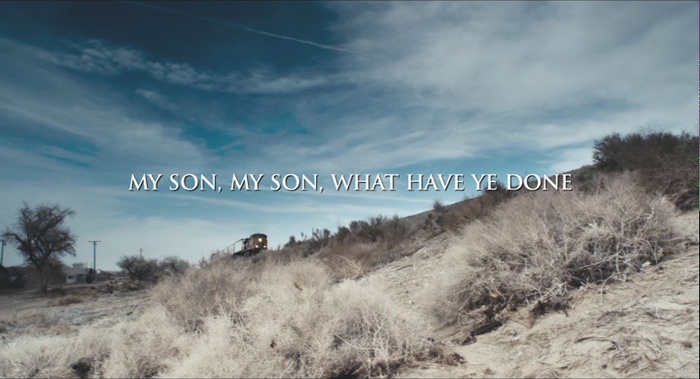
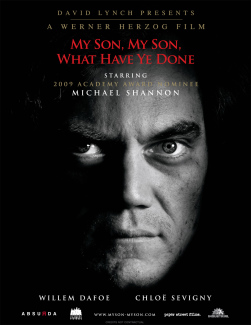
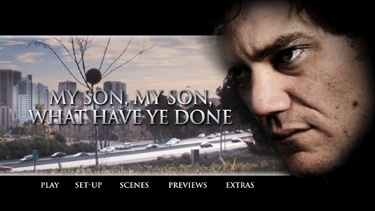
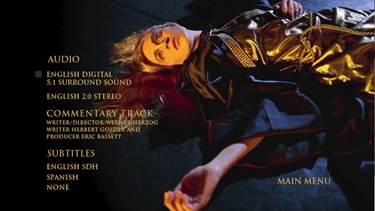
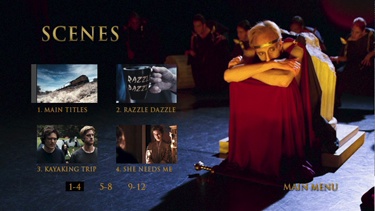
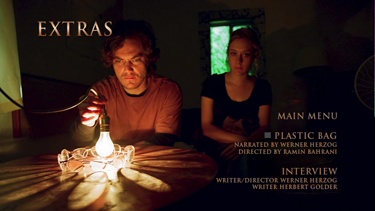
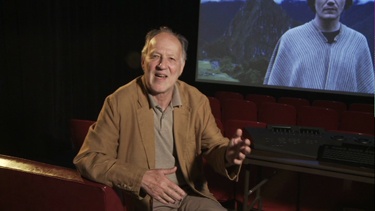
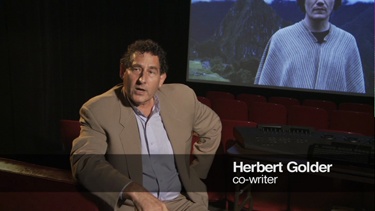
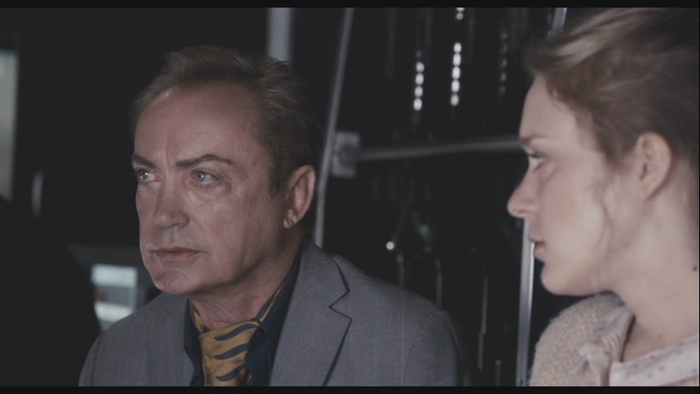
![]()
![]()

![]()
![]()



